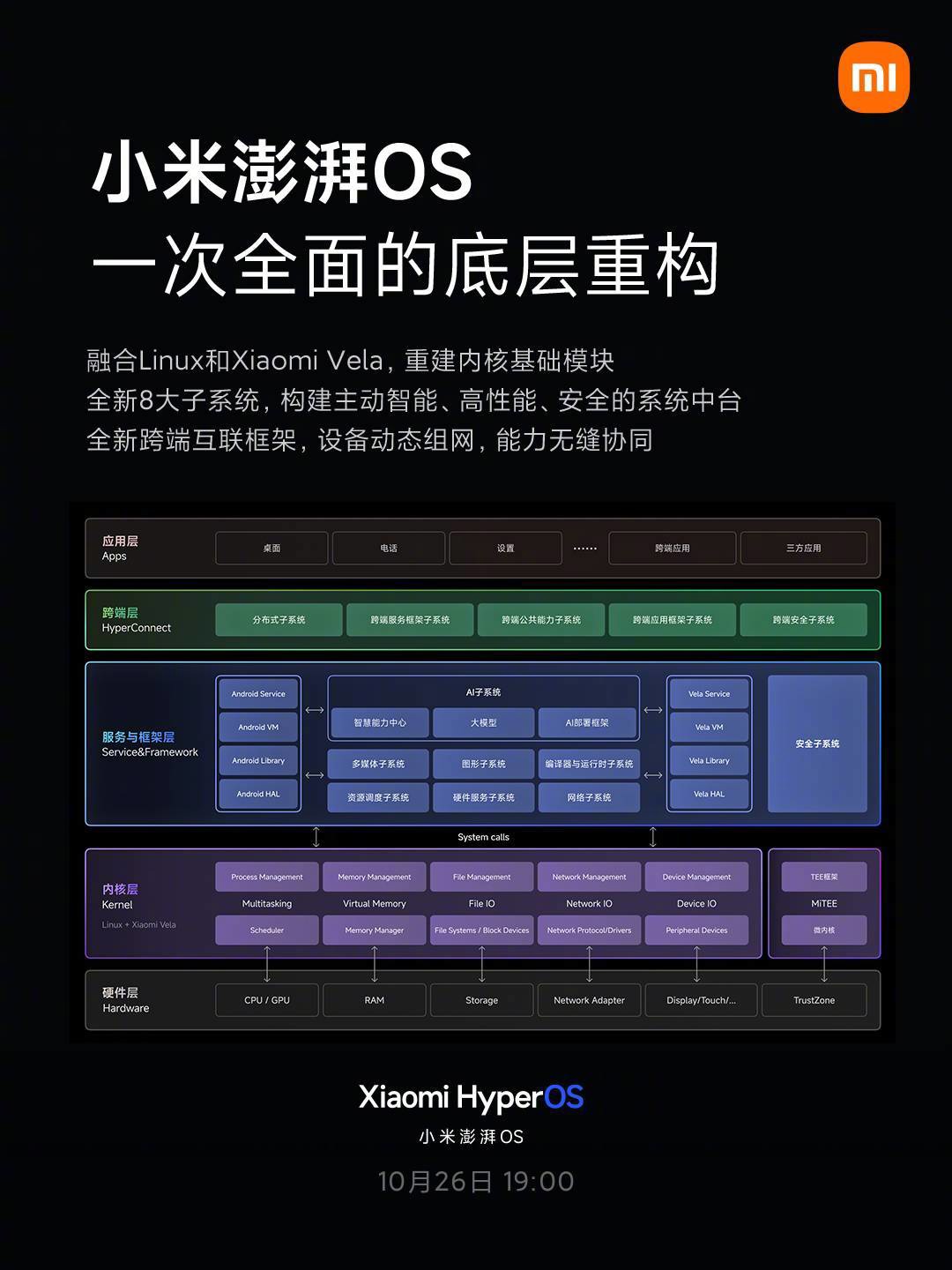
According to news from this site on October 23, Lei Jun once again posted a long post to warm up Xiaomi ThePaper OS and officially announced the complete system architecture. From the beginning of the architecture design, Xiaomi has clarified four goals:
First, achieve the strongest single-ended performance;
Second Second, AI empowerment becomes the "intelligent brain" of the entire ecosystem, able to provide active services to users;
Third, more convenient and efficient connections;
Fourth, realize solid protection of privacy security at all ends.

At the lowest system kernel layer, Xiaomi combines the self-developed Vela system kernel with the deeply modified Linux system kernel Through integration, various basic modules such as performance scheduling, task management, memory management, and file management have been reconstructed to achieve substantial improvements in performance and efficiency.
This new fusion kernel supports more than 200 processor platforms and more than 20 file systems. It can also be flexibly configured according to differences in hardware capabilities and has good compatibility, making The performance of each independent device can be completely liberated.
In the service and framework layer above the system kernel layer, Xiaomi has included the service framework of Android and the service framework of the self-developed Vela system as "middleware"; at the same time, Xiaomi has created 8 new System, in which the new AI subsystem integrates large model capabilities and becomes the "intelligent brain" of the entire system. Not only allows a single device to achieve extremely strong end-side AI capabilities, but also gives the entire ecosystem intelligent capabilities.
The top layer HyperConnect cross-end layer, Xiaomi allows all devices to unify the connection protocol and communicate in real time, ultimately building a smart world of "full ecology of people, cars and homes".
It is worth mentioning that Xiaomi ThePaper OS has created a full-end security system that runs through the kernel layer, service framework layer, and cross-end layer, especially the kernel layer. Xiaomi has enabled a completely independent "automatic "Developing a microkernel security system" ensures security from the lowest level.

The above is the detailed content of Lei Jun announced the complete system architecture of Xiaomi ThePaper OS, enabling a completely independent 'self-developed microkernel security system'. For more information, please follow other related articles on the PHP Chinese website!




